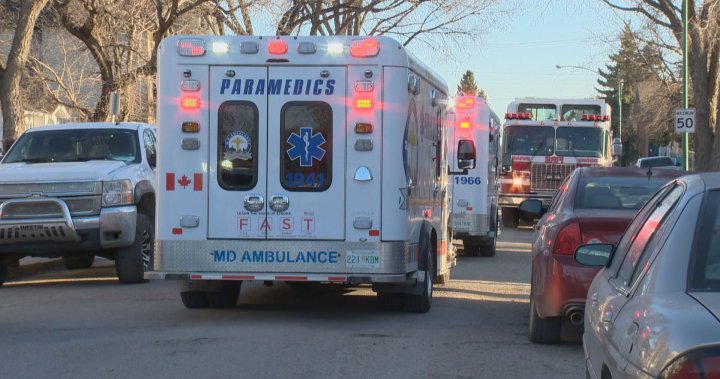A wave of potentially lethal street drugs has triggered multiple overdose alerts across Saskatchewan’s two largest urban centers, as health authorities scramble to prevent what could become the province’s deadliest month for substance-related fatalities.
The Saskatchewan Health Authority (SHA) issued urgent public warnings this week after emergency services in both Regina and Saskatoon reported alarming spikes in overdose calls requiring immediate medical intervention. In Regina alone, paramedics responded to 28 suspected overdoses within a 72-hour period, with seven victims requiring multiple doses of naloxone to be revived.
“What we’re seeing isn’t just concerning—it’s catastrophic,” said Dr. Peter Butt, an addiction specialist with the University of Saskatchewan. “The current substances circulating appear to contain unprecedented combinations of fentanyl, benzodiazepines, and other synthetic compounds that render standard overdose protocols less effective.”
Particularly troubling is the appearance of what health officials describe as “purple down,” a dangerous mixture containing both opioids and benzodiazepines that significantly increases respiratory depression risks. While naloxone can counteract opioid effects, it has no impact on benzodiazepines, creating a potentially fatal scenario even after administration of the life-saving medication.
Saskatoon’s situation mirrors Regina’s crisis, with hospital emergency departments reporting a 43% increase in overdose admissions compared to monthly averages. First responders note that many victims require prolonged medical supervision, as the drug combinations can cause respiratory depression to return even hours after initial treatment.
“These aren’t just statistics—they represent real lives being lost in our communities,” said Kayla DeMong, executive director of Prairie Harm Reduction in Saskatoon. “Many people don’t realize that the drug supply has fundamentally changed. What might have been manageable risk behavior five years ago can now be fatal with just one use.”
The SHA has activated emergency protocols, including increased distribution of naloxone kits through community health centers, supervised consumption sites, and pharmacies. Public health messages emphasize the importance of never using substances alone and carrying multiple naloxone doses.
This crisis extends beyond Saskatchewan’s borders, reflecting a broader Canadian public health emergency that has intensified since the COVID-19 pandemic disrupted both drug supply chains and access to treatment services. Border closures and supply chain complications led to increased cutting of street drugs with dangerous synthetic alternatives.
Provincial addiction services have expanded urgent care options in both cities, including temporary overdose prevention sites and extended hours at existing facilities. However, advocacy groups argue that more comprehensive approaches are needed to address the underlying crisis.
“We cannot simply manage our way out of this emergency with band-aid solutions,” said Dr. Johnmark Opondo, Saskatchewan’s Chief Medical Health Officer. “While immediate overdose prevention is critical, we must simultaneously address housing instability, mental health supports, and accessible treatment options.”
The Saskatchewan Coroners Service reports that substance-related deaths have already exceeded full-year totals from pre-pandemic years, with economic pressures and social isolation contributing factors frequently cited in case investigations.
As health authorities work to contain this immediate crisis, the larger question looms: is Saskatchewan prepared to confront the complex social and economic factors driving substance use, or will we continue responding to emergencies without addressing their root causes?


















